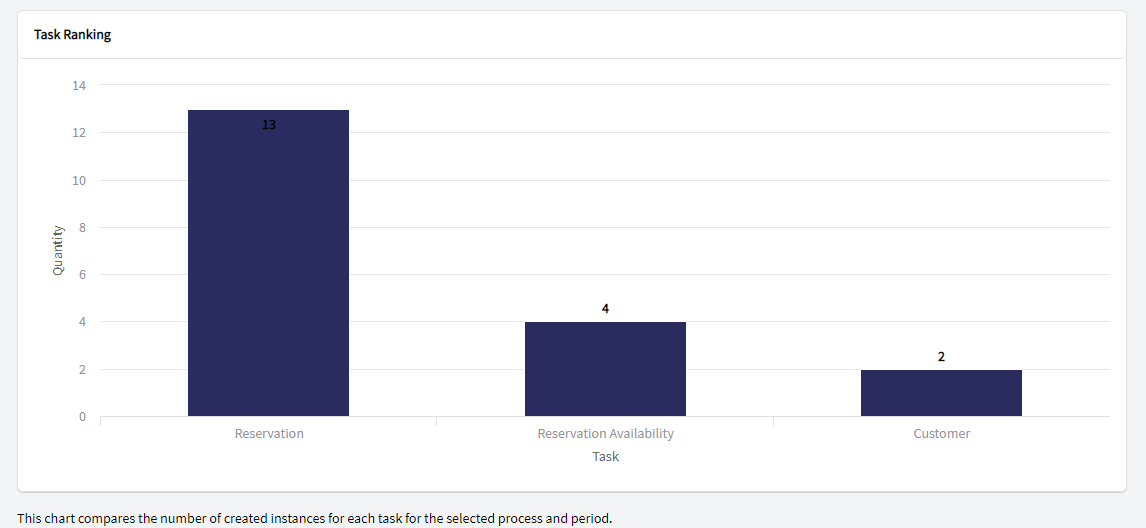The task analysis in GXflow allows for a detailed study of individual task behavior within processes, providing essential information for optimizing operational execution.

Purpose:
Display the percentage of closed tasks that were completed within the established deadline.
Usefulness:
Measures the efficiency of the work team and the effectiveness in managing the time allocated to each task.
Interpretation:
100% of the tasks were completed within the stipulated time, reflecting timely and controlled execution during the analyzed period.

Purpose:
Compare the actual duration (minimum, maximum, average) of completed tasks against the estimated duration.
Usefulness:
Helps assess whether time estimates are realistic and whether there are tasks that consistently take longer than expected, supporting improvement actions in planning and workload management.
Interpretation:
-
For the 'Reservation' task, the average duration was 0.82 time units, with a maximum of 1.43.
-
The tasks 'Customer' and 'Reservation Availability' showed lower average durations (0.22 and 0.17 respectively), but had no defined estimated duration (estimated value was zero).
This suggests the need to define estimated times to improve operational control.

Purpose:
Compare the number of instances created for each task during the analyzed period.
Usefulness:
Helps identify which tasks generate the highest workload, assisting in planning human resource allocation and prioritizing optimization efforts.
Interpretation:
The 'Reservation' task is the most frequent with 13 instances, followed by 'Reservation Availability' (4 instances) and 'Customer' (2 instances). This indicates that the highest workload is concentrated in reservation management.